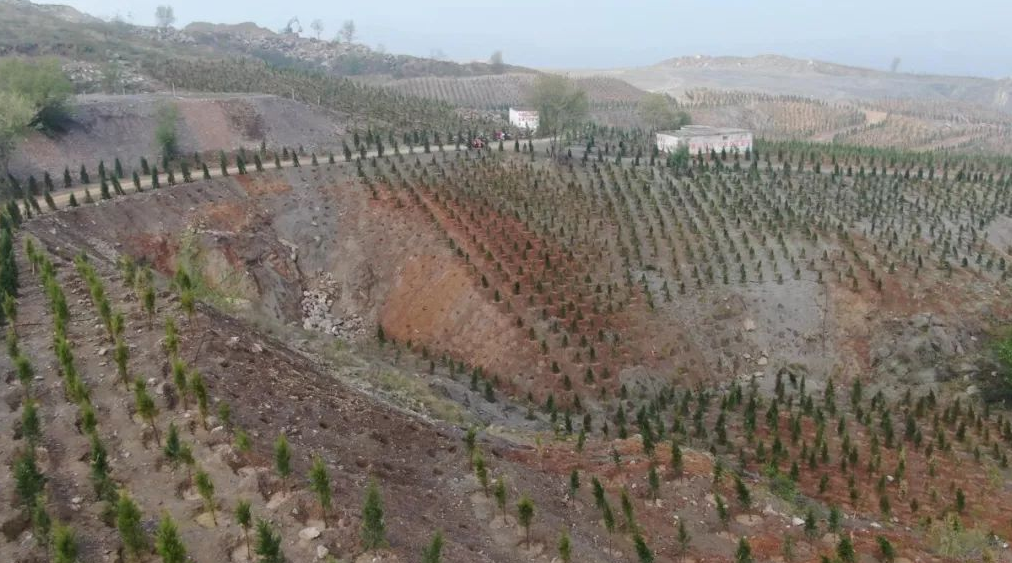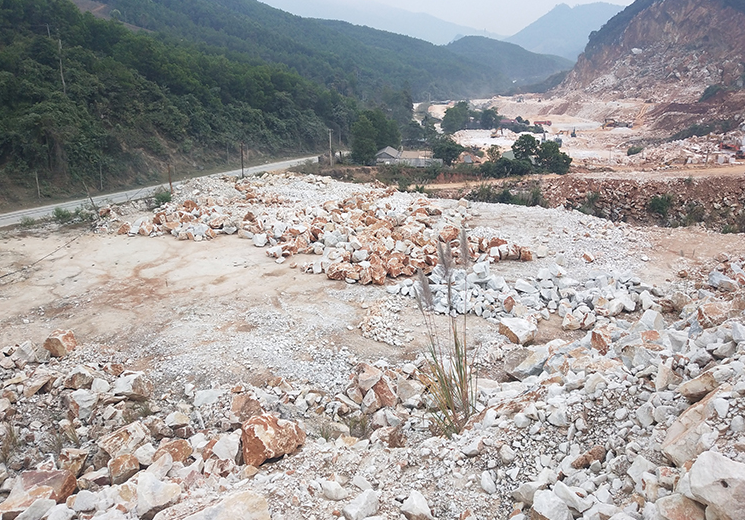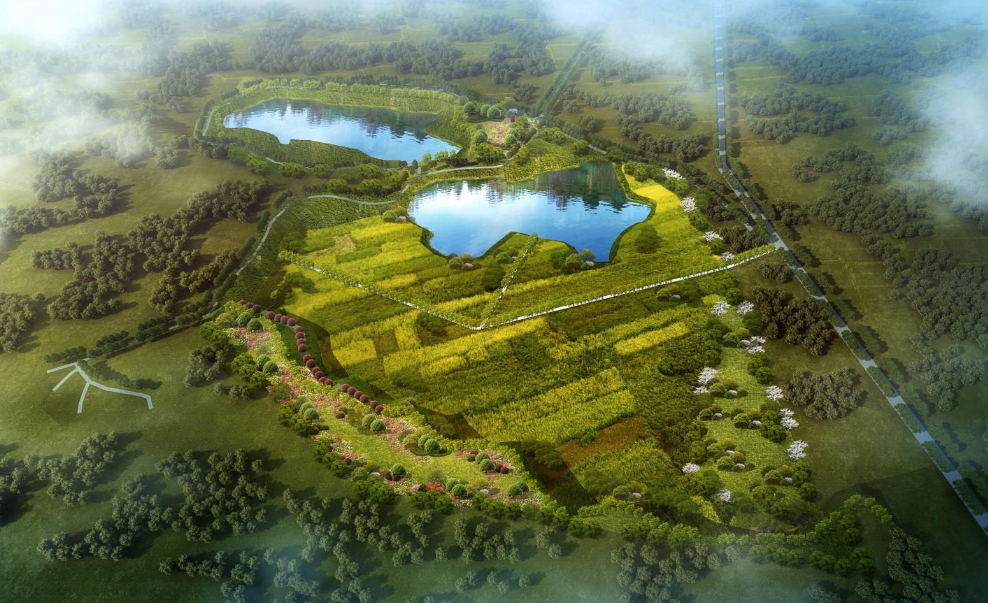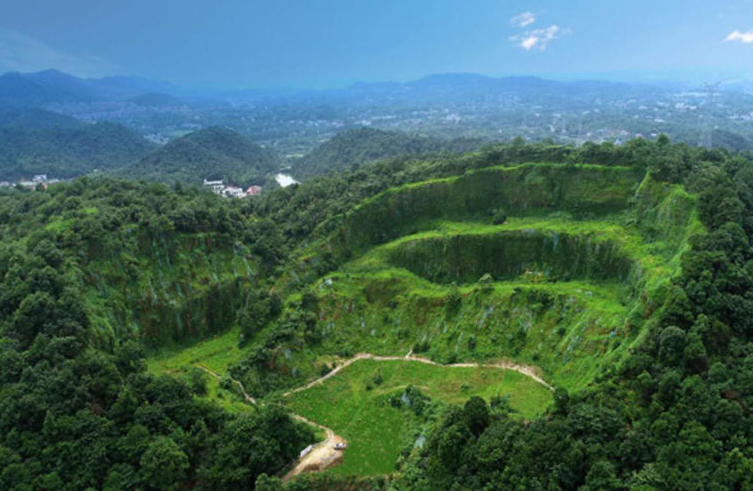Iron ore industry Research Report: Lonely at the top
1. Basic information:
Nearly half of Australia's reserves and mining costs are extremely advantageous, and domestic ore is marginal production capacity
1.1 Reserves, taste and cost: Australia and Pakistan account for nearly half of the reserves and have significant cost advantages
From the perspective of reserves: in 2020, the global iron ore reserves are 180 billion tons, with Australia, Brazil, Russia and China accounting for 71.7%. According to USGS statistics, the iron ore reserves of the above countries are 50 billion, 34 billion tons, 25 billion tons and 20 billion tons, respectively, accounting for 27.8%, 18.9%, 13.9% and 11.1% of the world's total reserves. In addition, India, Ukraine and Canada and other countries are rich in iron ore resources.
From the perspective of grade: the average grade of global iron ore in 2020 is 46.6%, the average grade of South Africa and India is more than 60%, and the taste of Ukraine, China and the United States is low. According to the USGS 2020 statistics, the average iron ore grade in South Africa and India exceeds 60%; The average grade of iron ore in Russia and Iran is between 50% and 60%; The average iron ore grade in Australia, Sweden and Brazil is between 40% and 50%. The average grade of iron ore in China is only 34.5%, well below the global average of 46.6%.
From the production point of view: in 2020, the global iron ore production reached 2.4 billion tons, and Australia, Brazil, India, China and Russia accounted for 82% of the output. According to USGS statistics, the global iron ore production in 2020 reached 2.4 billion tons, a year-on-year decrease of 2.04%, mainly concentrated in Australia, Brazil, India, China and Russia, accounting for 37.5%, 16.7%, 9.6%, 14.2% and 4.0% of the global iron ore production, respectively. That adds up to 82%.

From the point of view of the average cost of iron ore in various countries: Australia and Brazil have high production and prominent cost advantages, and 80% and 90% of the global iron ore cost curve are concentrated near the cost of iron ore in China. According to the WESTERN AUSTRALIA IRON ORE PROFILE - March 2021, released by the Government of Western Australia, The top five countries for CFR cash costs in 2020 are India, Australia, Brazil, South Africa and Russia, with CFR cash costs of 26.7, 34.5, 36.0, 48.6 and 60.0 USD/ton respectively, and China's CFR cash costs of 82.8 USD/ton. Combined with the 2020 production data compiled by the USGS, we make the production-cost curve as follows: 80% and 90% of the global iron ore cost curve are concentrated around the Chinese iron ore cost level.
From the mainstream mine C1 cash cost point of view: China's iron concentrate manufacturing cost is almost four times the cost of the four major mines, and the historical cost decline is small. According to the annual reports of the four major mines in fiscal year 2020, the cash cost of iron ore C1 of the four major mines is only 11.84-15.40 US dollars/ton, according to Mysteel, The average manufacturing cost of iron concentrate in key domestic mines in 2020 is 367.54 yuan/ton (using the average exchange rate of RMB/US dollar 1 yuan = US $0.1449 in 2020, equal to US $54.54 / ton), and the average in the past 7 years is 359.37 yuan/ton. The overall production cost of iron concentrate in domestic key mines shows an oscillating trend. It can be seen that the C1 cash cost of the four major mines is significantly lower than the domestic iron concentrate manufacturing cost.
From the perspective of 62%CFR cash cost of mainstream mines, the four major mines are $21.06- $30.78 / dry metric ton. We convert the C1 cash cost of the four major mines into the CFR cash cost at 62% grade, and the formula is 62%CFR cash cost (USD/dry metric ton) = (C1* (1+ resource tax rate) + freight rate) * (1- water content) * (62%/ average grade). Based on company announcements and Wind statistics, we calculate that the 62%CFR cash cost for Vale, BHP Billiton, Rio Tinto and FMG in FY2020 is $30.78, 21.34, 22.11 and 21.06 / Mt, respectively.
1.2 Import and export trade flow: Asia is the main import region, Oceania and America are the main export region
By region, Asia is the world's main iron ore import region, Oceania and the Americas for the main export region. According to statistics from the International Iron and Steel Association, from the import side, in 2019, Asia's annual iron ore imports were 1.40 billion tons, accounting for 84.8% of the global total iron ore imports, leading the second EU 28 countries by 1.26 billion tons. Among them, China contributed the main force, as the largest importer of iron ore, the total import of iron ore in 2019 reached 1.07 billion tons, accounting for 64.8% of the total global import. From the export side, the total exports of Oceania and the Americas in 2019 were 890 million tons and 430 million tons, respectively, ranking first and second in the world's total exports. In addition, it mainly exports to outside the region, and the supply to the region is small, accounting for only 0% and 3.7% of the total export. In addition, the volume of iron ore exports from Africa and the Middle East is also in the forefront, with annual exports of 120 million tons in 2019, ranking third. Although the total volume of iron ore exports of Asian countries is large, it is mainly supplied within the region, and the export volume outside the region only accounts for 6.5% of the total export volume.
By country, the top three iron ore imports are China, Japan and South Korea. According to Mysteel data statistics, in 2019, the iron ore imports of the three countries were 1.07 billion tons, 120 million tons and 0.8 million tons, and China's iron ore imports in a year, as a large iron ore demand country, were almost 9 times that of Japan. As can be seen from the following table, the import sources of the three countries are mainly Australia and Brazil, among which the annual export volume of Australia and Brazil to China reached 670 million tons and 230 million tons respectively.

2. Demand: It is expected that the global iron ore demand growth rate in 21 and 22 years will be 4.2% and 0.8%
Iron ore demand comes from the long process (blast furnace + converter) blast furnace ironmaking process and the short process (electric furnace) direct reduced iron link, so we analyzed the global iron ore demand in 2021 and 2022 from the three perspectives of overseas, domestic long process blast furnace ironmaking and global direct reduced iron.
In terms of the proportion of global crude steel production in 2019, the converter accounted for 71.6%, of which, by country, China's crude steel production accounted for 66.6% of the global crude steel of the converter. According to the statistics of the International Iron and Steel Association, in the global production of sub-process crude steel in 2019, converter crude steel accounted for 71.6% and electric furnace crude steel accounted for 27.9%. By country, China's crude steel production accounted for 66.6%, followed by Japan, South Korea and India, accounting for 5.6%, 3.6% and 3.6%, respectively.
In 2019, China's crude steel output was 1.0 billion tons, of which the crude steel of converter accounted for 89.6%, while the crude steel output of Iran and Italy was only 0.3 million tons and 20 million tons, respectively, but the crude steel of electric furnace accounted for 90.1% and 81.9%, respectively.
2.1 Overseas long process demand: it is expected that the production of pig iron in 21 and 22 years will be 490 and 500 million tons
Overseas long process capacity in 2020 under construction 16.7 million tons, planned construction capacity of 24.3 million tons. According to the OECD's Latest Developments in Steelmaking Capacity report, published in June 2020, We count the long and short process capacity Underway in 2020 and planned for 2021-2022 in overseas countries or regions. Overseas production capacity under construction in 2020 is 16.7 million tons of long process capacity and 23.184 million tons of short process capacity. From 2021 to 2022, it is planned to build 24.3 million tons of long process capacity and 27.376 million tons of short process capacity.
the Organization for Economic Cooperation and Development (OECD) has published Capacity Developments in the World Steel Industry annually since 2015, and we assume that if a long-process project is shown to be under construction in 2020:
(1) If it is under construction in 2019, it will be put into production in 2021 at the earliest;
(2) If it is in the planned state in 2019, production will begin in 2022 at the earliest.
Combined with the project progress information, we are expected to add 17.72 million tons of overseas long process capacity in 2021-2022, 2.23 million tons.

Japan is a typical long-process steelmaking country, we take the production situation of the Japanese steel industry as the representative of overseas long-process steel enterprises to put forward the following hypothesis:
(1) Considering the rapid increase in capacity utilization after the gradual elimination of the impact of the novel coronavirus epidemic, we assume that the average capacity utilization level of crude steel in existing overseas long-process steel enterprises from March to December 2021 will return to the same period in 2010-2019 except 2020. Specifically, we assume a recovery to 2011 levels in the cautious case, 2014 levels in the optimistic case, and the 2010-2019 average in the neutral case.
(2) Considering factors such as the time point of production and capacity climb, it is assumed that the capacity utilization rate of overseas new growth process capacity in 2021 is about 50%.
Assuming that the capacity utilization rate of overseas long-process pig iron from March to December 2021 is 95.1, 100.6, 105.1 (based on 2010 =100), we predict that the production of long-process pig iron may be 460-500 million tons. According to the statistics of the International Iron and Steel Association, the production of overseas long process pig iron in January-February 2021 is 74 million tons, We assume that the average production of long-process pig iron from March to December 2021 = the average production of long-process pig iron from January to February × (the average utilization rate of crude steel capacity in Japan from March to December/the average utilization rate of crude steel capacity in Japan from January to February). Therefore, under the three assumptions of caution, neutrality and music outlook, it is expected that the original production capacity of overseas from January to December 2021 will be 4.55 million, 477 million and 495 million tons, respectively. At the same time, the overseas new production capacity in 2021 is expected to contribute 0.09 million tons of production, and the global overseas long process pig iron production in 2021 will be 464, 486 and 504 million tons, respectively, an increase of 12.8%, 18.2% and 22.5%.
We predict that the output of overseas long-process pig iron in 2022 will be 4.8, 5.0 and 520 million tons, respectively. For 2022, we still use the assumptions of 2021:
(1) We assume 2011 levels in the cautious case, 2014 levels in the optimistic case, and 2011-2019 averages in the neutral case.
(2) Considering factors such as the time point of production and capacity climb, it is assumed that the capacity utilization rate of the overseas new growth process capacity in 2021 is 80% and that of the overseas new growth process capacity in 2022 is 50%.
Therefore, assuming that the capacity utilization rate of overseas long-process pig iron in 2022 is 95.8, 100.3 and 104.6 (based on 2010 =100), we predict that the output of overseas long-process pig iron in 2022 will be 4.6, 4.8 and 5.0 million tons, respectively. Considering that the new overseas production increase in 2022 is expected to contribute 0.15 million tons of production, the annual overseas long-process pig iron production in 2022 will be 4.8, 5.0 and 520 million tons, respectively.
2.2 Domestic long process demand: It is expected that the domestic long process pig iron production in 21 years will decline by 2.3% year-on-year
In 2020, China's long-process pig iron production accounted for 68.2% of the global long-process pig iron production. According to the statistics of the International Iron and Steel Association, the global long-process pig iron production in 2020 is 1.295 billion tons, an increase of 1.0%, of which China's long-process pig iron production reached 884 million tons, an increase of 9.2%, and the output accounted for 68.2% of the global long-process pig iron production.

The National Development and Reform Commission issued a document that will ensure a year-on-year decline in crude steel production in 2021. According to the news of the National Development and Reform Commission on April 1, 2021, the reduction of crude steel production in 2021 will take into account factors such as the "six stability" work, the implementation of the "six guarantees" task, the carbon peak carbon neutral long-term goal node requirements and the smooth operation of the steel industry on the basis of consolidating and improving the results of steel capacity reduction. While maintaining the continuity and stability of the supply-side structural reform policy in the steel industry, it adheres to the principles of marketization and rule of law, distinguishes the situation, categorizes guidance, and focuses on reducing the crude steel production of enterprises with poor environmental performance, high energy consumption, and relatively backward process and equipment levels, avoiding "one size fits all" and ensuring that the national crude steel production will decline year-on-year in 2021.
Tangshan environmental protection limited production upgrade, "carbon peak" policy has achieved initial results. On March 18, 2021, the Office of the Tangshan Air Pollution Prevention and Control Leading Group issued the Notice on Submitting Measures to Limit Production and Reduce Emission of Steel Industry Enterprises, requiring all steel enterprises in Tangshan except Qian 'an Steel Company of Shougang Co., LTD and Shougang Jingtang Iron and Steel Joint Limited Liability Company. From 0:00 on March 20 to 24:00 on December 31, the production limit will be implemented, and the emission reduction ratio will be 30%-50%. According to Mysteel statistics, in the 13th week of 2021, the utilization rate of blast furnace ironmaking capacity of 247 iron and steel enterprises in the country was 88.3%, which was 3.2PCT lower than the average capacity utilization rate in January and February.
We expect global production growth to be 3.3% in 2021, with production increases mainly coming from Brazil and Australia. According to our statistics, there are 33 iron ore companies in 11 countries and regions in the world, and the 2020 iron ore production and 2021 iron ore production forecast of 105 mines with a global market share of 71.36%, it can be seen that Australia and Brazil are still the main sources of production increase. Production increase in 2021 can reach 27.4 million tons, 37.9 million tons, in addition to the four major iron mines such as Roy hill, Hope Downs production in 2021 can reach 60 million tons, 47 million tons. In India, production in 2021 increased by 5.56 million tonnes compared to 2020. Other countries, such as the United Kingdom and Russia, are mainly recovering from pre-epidemic levels.
We expect global production to grow by 3.2% in 2022, with additional production coming from Vale and FMG. According to the above statistics for the new projects of the four major mines, Vale will increase production by 70 million tons in 2022, and FMG's Iron Bridge project will increase production by 11 million tons.
4. Comprehensive supply and demand: tight balance of supply and demand in 21 years, weak supply and demand in 22 years, and mine prices are expected to fall at a high level
According to the previous analysis, the growth rate of global iron ore production in 2021 May be 3.3%, the growth rate of demand may reach 4.2%, and the global iron ore market may be in a tight balance. According to the above forecast for iron ore demand and supply, we expect that the growth rate of global iron ore production in 2021 will be 3.3%, and the growth rate of demand is expected to reach 4.2%, so it is judged that the global iron ore market in 2021 May be in a tight balance. As of May 10, 2021, the MyIpic iron ore composite price Index reached 212.6 US dollars/ton, a significant increase of 86.4% from the 2020 global average price of 114.1 US dollars/ton.

According to the previous analysis, the growth rate of global iron ore production in 2022 is 3.2%, and the growth rate of demand is only 0.8%, and the supply and demand are weakening, and the price is expected to fall.
Under the background of carbon peak and "to produce", iron ore prices are expected to fall. According to the statistics of Wind and the National Bureau of Statistics, the MyIpic iron ore comprehensive price index has a strong correlation with the cumulative domestic pig iron production, and under the background of carbon peak and "to production", iron ore prices are expected to follow the year-on-year growth rate of pig iron production.
Port inventory has been close to the central level, iron ore port opening began to decline at a high level. According to Wind data, as of May 7, 2021, iron ore inventories at domestic ports were nearly 130 million tons, which has risen to more than 20 million tons from the inventory low in June 2020. In addition, the average daily volume of iron ore thinning at 45 ports has also begun to gradually decline, indicating that iron ore demand is weakening at the margin under the background of high ore prices and marginal decline in production growth.
China's iron ore is marginal production capacity, supply and demand is still a tight balance of iron ore price support. According to the WESTERN AUSTRALIA IRON ORE PROFILE - March 2021 released by the Government of Western Australia and USGS statistics, 80% and 90% of the global iron ore cost curve are concentrated around the Chinese iron ore cost level, with China CFR cash cost of $82.8 / ton in 2020 and full cost or nearly $100 / ton. In the context of "carbon peak" and "production" in the steel industry, the price of iron ore in 2022 will drop to $100 / ton, and the cost of iron ore such as China and Canada is its price support.
In summary, the margin of global iron ore supply and demand pattern or will weaken, and mine prices are expected to fall from a high level. Under the policy background of "carbon peak and carbon neutrality" in the steel industry, the profit distribution of the upper, middle and lower reaches of steel has been extremely distorted or will be reshaped, and the profits of the midstream steel smelting and downstream manufacturing industries are expected to be maintained and improved.
- EMERSON
- Honeywell
- CTI
- Rolls-Royce
- General Electric
- Woodward
- Yaskawa
- xYCOM
- Motorola
- Siemens
- Rockwell
- ABB
- B&R
- HIMA
- Construction site
- electricity
- Automobile market
- PLC
- DCS
- Motor drivers
- VSD
- Implications
- cement
- CO2
- CEM
- methane
- Artificial intelligence
- Titanic
- Solar energy
- Hydrogen fuel cell
- Hydrogen and fuel cells
- Hydrogen and oxygen fuel cells
- tyre
- Chemical fiber
- dynamo
- corpuscle
- Pulp and paper
- printing
- fossil
- FANUC
- Food and beverage
- Life science
- Sewage treatment
- Personal care
- electricity
- boats
- infrastructure
- Automobile industry
- metallurgy
- Nuclear power generation
- Geothermal power generation
- Water and wastewater
- Infrastructure construction
- Mine hazard
- steel
- papermaking
- Natural gas industry
- Infrastructure construction
- Power and energy
- Rubber and plastic
- Renewable energy
- pharmacy
- mining
- Plastic industry
- Schneider
- Kongsberg
- NI
- Wind energy
- International petroleum
- International new energy network
- gas
- WATLOW
- ProSoft
- SEW
- wind
- ADVANCED
- Reliance
- YOKOGAWA
- TRICONEX
- FOXBORO
- METSO
- MAN
- Advantest
- ADVANCED
- ALSTOM
- Control Wave
- AB
- AMAT
- STUDER
- KONGSBERG
- MOTOROLA
- DANAHER MOTION
- Bently
- Galil
- EATON
- MOLEX
- Triconex
- DEIF
- B&W
- ZYGO
- Aerotech
- DANFOSS
- KOLLMORGEN
- Beijer
- Endress+Hauser
- MOOG
- KB
- Moxa
- Rexroth
- YAMAHA
- Johnson
- Westinghouse
- WAGO
- TOSHIBA
- TEKTRONIX


Email:wang@kongjiangauto.com



































































































































